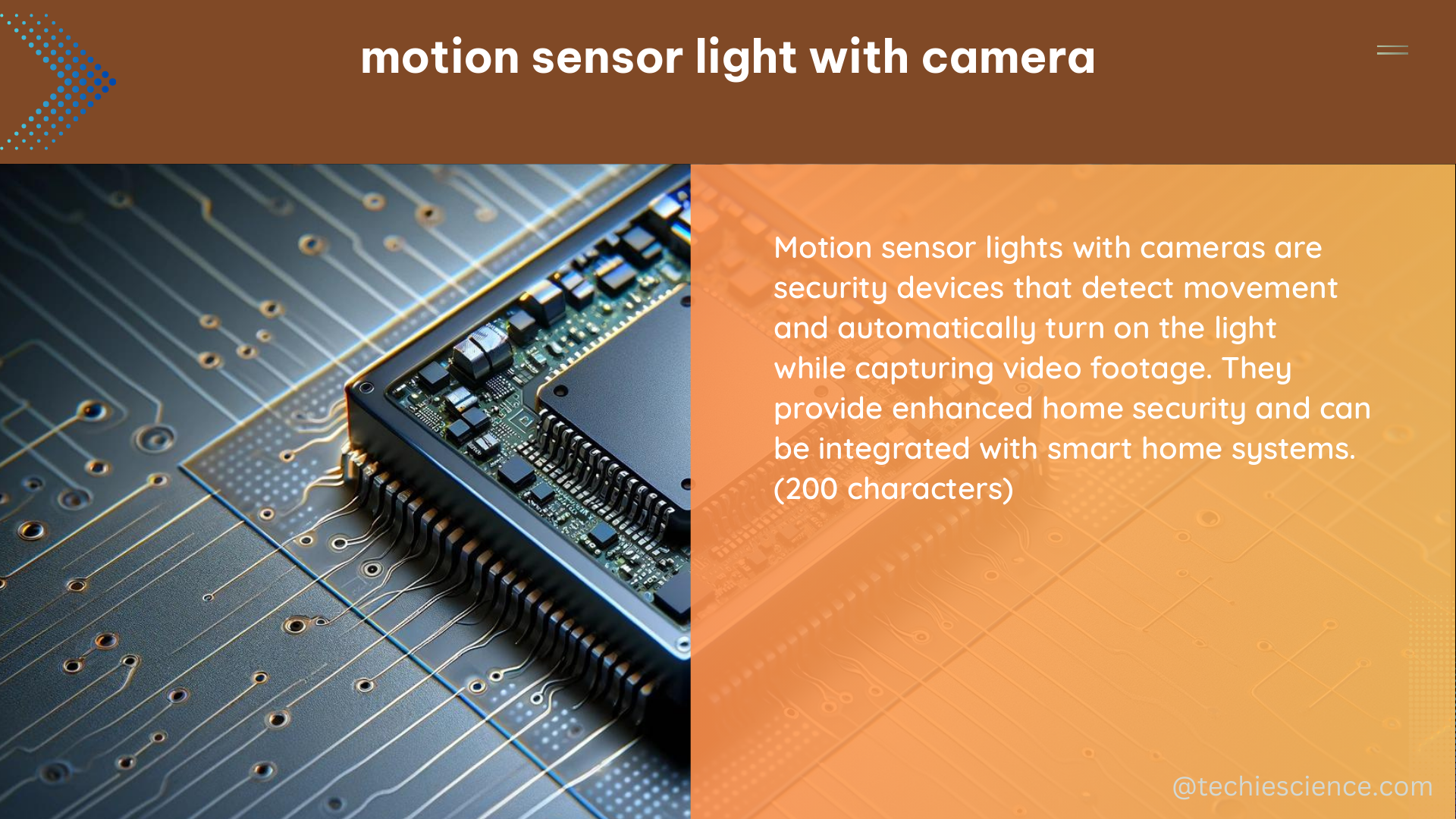Motion sensor lights with cameras are a powerful combination of two essential home security technologies – motion detection and video recording. These devices not only provide enhanced lighting when movement is detected but also capture visual evidence, making them a versatile solution for both security and convenience.
Motion Detection Capabilities
The motion detection capabilities of these devices are a crucial aspect to understand. Typically, motion sensor lights with cameras have a detection range of up to 30 feet, allowing them to cover a significant area around your home. The field of view for these sensors can vary, but is often around 120 degrees, providing a wide coverage area.
The refresh rate of the motion sensors is also an important consideration, as it determines how quickly the device can detect and respond to movement. Most motion sensor lights with cameras have a refresh rate of a few hertz, meaning they can update the image several times per second, ensuring rapid response times.
Illuminance Measurement

In addition to motion detection, these devices also incorporate light sensors that measure illuminance in lux, a unit that quantifies the intensity of light. The Si1133 photodiode, for example, is a common sensor used in motion sensor lights with cameras, and it logs illuminance data along with other environmental factors like acceleration, temperature, and pressure.
Understanding the illuminance measurement capabilities of these devices is essential for optimizing their performance and ensuring they provide the appropriate lighting levels when triggered.
Camera Specifications
The camera component of motion sensor lights is equally important, as it captures visual evidence of any detected movement. These cameras can vary in resolution, but typically have a minimum of 720p, providing high-quality footage.
The storage capacity of the camera is another crucial factor to consider. Most motion sensor lights with cameras can store several hours of video footage, depending on the specific model and resolution settings.
Power Consumption and Connectivity
Power consumption is a significant consideration when installing motion sensor lights with cameras. These devices can consume a substantial amount of power, especially when the camera is actively recording. It is essential to ensure that the power source and capacity can adequately support the device’s energy requirements.
Connectivity is another important aspect to consider. Some motion sensor lights with cameras may require a separate power source, while others can be connected to an existing electrical system. Additionally, the camera component may need to be connected to a network or device to enable remote access and storage of video footage.
Regulatory Considerations
When installing and using motion sensor lights with cameras, it is crucial to ensure compliance with local regulations and laws related to privacy and surveillance. This may involve obtaining permission from neighbors or posting clear signage to alert individuals that they are being recorded.
DIY Installation and Configuration
For a successful DIY installation and configuration of motion sensor lights with cameras, there are several key steps to consider:
-
Placement and Alignment: Carefully position the motion sensor and camera to ensure optimal detection range and field of view. This may require adjusting the placement of the devices or configuring the settings within the device software.
-
Power and Connectivity: Determine the power requirements of the motion sensor light with camera and ensure a suitable power source is available. If the camera requires network connectivity, ensure the necessary infrastructure is in place.
-
Calibration and Testing: Thoroughly test the motion sensor and camera to verify their proper functioning, including the detection range, field of view, and image quality. Adjust settings as needed to achieve the desired performance.
-
Regulatory Compliance: Familiarize yourself with local regulations and obtain any necessary permissions or approvals before installing and using the motion sensor light with camera.
By following these steps and leveraging the technical details provided, you can successfully integrate motion sensor lights with cameras into your home security setup, enhancing both safety and convenience.
Conclusion
Motion sensor lights with cameras offer a comprehensive solution for home security and lighting automation. By understanding the technical specifications and considerations surrounding these devices, you can make informed decisions and implement a tailored system that meets your specific needs. Whether you’re looking to enhance your home’s security, monitor wildlife activity, or provide additional lighting and surveillance for your property, motion sensor lights with cameras can be a valuable addition to your DIY home automation setup.
References:
- Sensing Movement: Microsensors for Body Motion Measurement. Multidisciplinary Digital Publishing Institute (MDPI). https://www.ncbi.nlm.nih.gov/pmc/articles/PMC3274064/
- How do I know if a motion sensor has a camera in it? – Reddit. https://www.reddit.com/r/homesecurity/comments/vhe7j8/how_do_i_know_if_a_motion_sensor_has_a_camera_in/
- Light Sensors: Units, Uses, and How They Work – enDAQ Blog. https://blog.endaq.com/how-light-sensors-work
- Motion Sensor Light Triggering when camera is mounted above it. Wyze Forums. https://forums.wyze.com/t/motion-sensor-light-triggering-when-camera-is-mounted-above-it/16102
- Wearable motion sensors to continuously measure real-world physical activity and mobility in older people: a systematic review. National Center for Biotechnology Information. https://www.ncbi.nlm.nih.gov/pmc/articles/PMC4035103/

The lambdageeks.com Core SME Team is a group of experienced subject matter experts from diverse scientific and technical fields including Physics, Chemistry, Technology,Electronics & Electrical Engineering, Automotive, Mechanical Engineering. Our team collaborates to create high-quality, well-researched articles on a wide range of science and technology topics for the lambdageeks.com website.
All Our Senior SME are having more than 7 Years of experience in the respective fields . They are either Working Industry Professionals or assocaited With different Universities. Refer Our Authors Page to get to know About our Core SMEs.